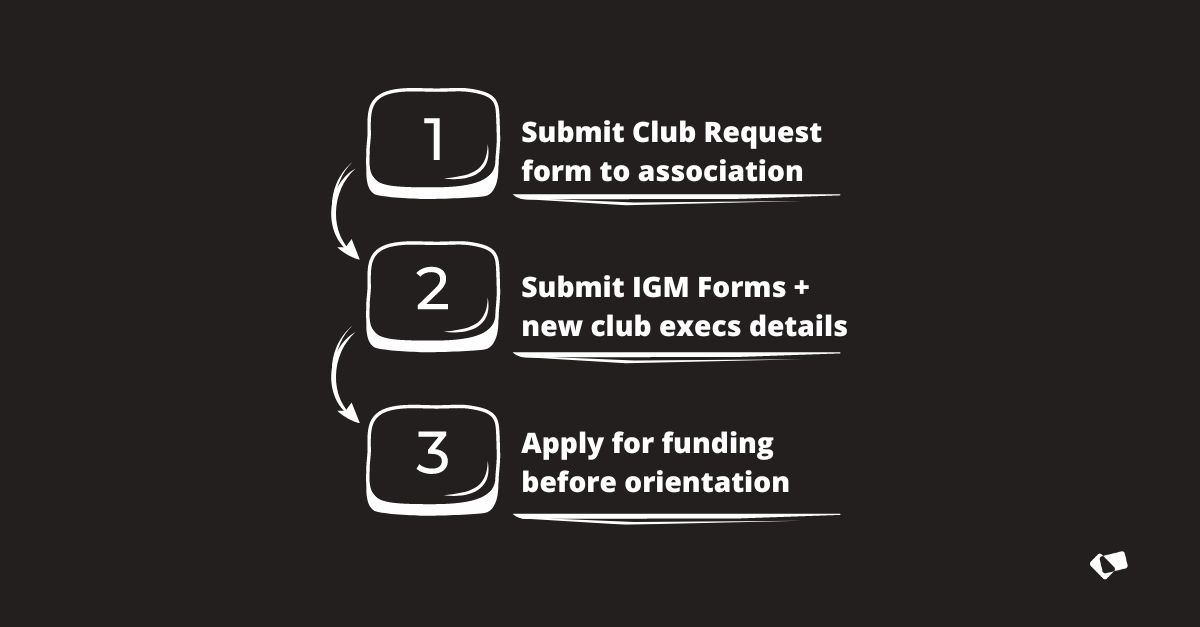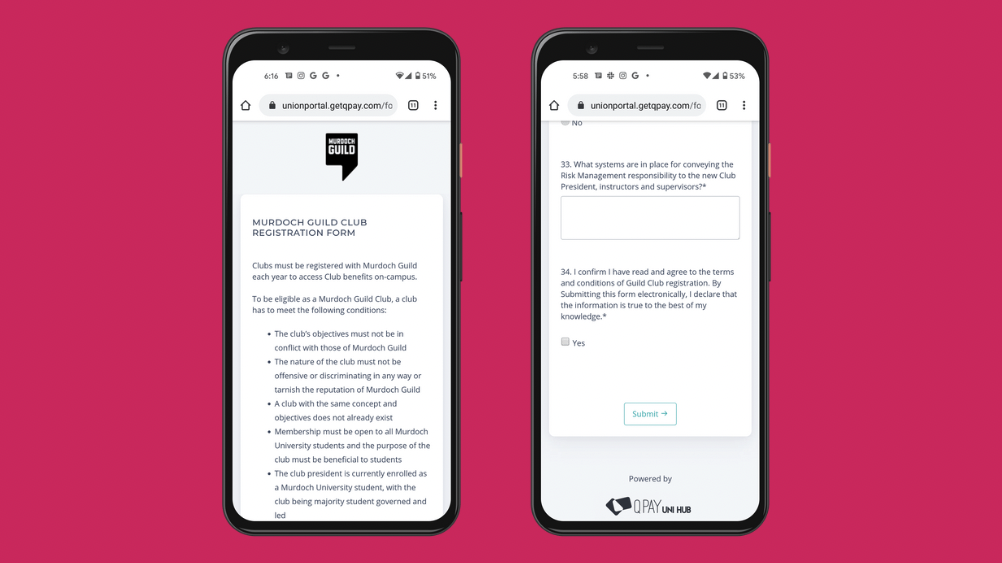
Starting a club or society:
The majority of university clubs and societies are required to affiliate with their student association, union or guild if they want access to certain benefits which can include insurance, access to grant funding, access to room bookings on campus, professional development opportunities and club exposure at events. However, to get access to these benefits a club needs to go through a formal affiliation process that varies from university to university, with some student associations requiring multiple forms and an approval process that may take more than 2-3 weeks. We can quickly begin to understand why clubs may get discouraged from this and either pass on the affiliation or impact the timeline by being slower to respond and submit the required documentation.
For the clubs that don’t bother with affiliation and run their organisation with self funded techniques, there can still be problems such as running events/workshops on campus. Any on campus activity usually requires insurance, for student safety and to avoid any liable situations, and approval from the university student association. With over 58% of club events occurring on Australian campuses, student associations are always playing catchup to make sure all clubs are running compliant events.

A typical affiliation process for new clubs at universities
Pain Points for Student Associations:
On average there are about 7 different forms a club/society submits to their respective student association which include:
- Affiliation Form
- AGM form
- Event Application Form
- Insurance Application Form
- Grant form
- Audit form
- Re-affiliation form
Depending on the number of clubs at any particular campus, the number of submissions can quickly add up with a good % of them requiring to be resubmitted due to errors or incomplete information. Let’s take a couple of examples here:
- Campus with 50 clubs, there would be an initial 350 submissions to manage and organise
- Campus with 100 clubs, there would be an initial 700 submissions to manage and organise
- Campus with 150+ cubs, there would be an initial 1,050 submissions to manage and organise
Regarding the ones that have errors or have not been completely correctly, student association staff would then need to contact each individual club via email and give their notes, on top of tracking the submissions that need to be followed up with re-submissions, are completed or have been outright rejected……

A Positive Experience – for both students and admin staff:
Making sure every club is compliant is not an easy or a quick task, especially when student associations and clubs need to spend time on more impactful things such as organising and hosting great events. Using existing tools such as Email, Formstack and Google Forms may assist in the basic collection of information, but fall short when it comes to time management, information organisation and effective communication.
For clubs and student associations to operate in tandem, and have a link at all times, where both parties can have a pulse on each other, an adoption of smarter software solutions is advantageous – with a big focus on experience (By no means are we suggesting a highly sophisticated system that will make a dent in your budget). Student Associations like University of Queensland Union, Edith Cowan University Student Guild and Tasmania University Student Association, and their respective clubs, have started using the QPay Club Management and Forms solution to automatically manage all their club affiliation and forms. The system enables club executives to easily progress their affiliation status, submit and track forms without the need for back and forth emails and perform their club duties (sell memberships, create events, sell merchandise etc). Equally, student association staff automatically get notified of various form status, can oversee all club activity and access a smart CRM to stay in contact with club executives.
However, the most important factor in solving the compliance problem is to create a user friendly experience for both clubs and students. Today’s generation determines a product experience by judging feel, look and usability – this was and still is the driving force of how we create our campus solutions.


About The Author: Moe
More posts by moe